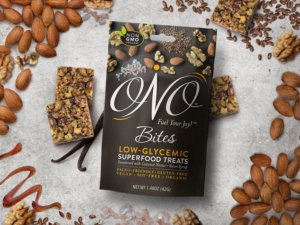There’s a war on sugar and you’ll want to be on the winning side of it if your brand contains sugar. “Soda taxes” in many US jurisdictions and the global proliferation of taxes on sugary foods and beverages reflect the growing medical and consumer sentiment that we need to reduce our sugar consumption. And American consumers report acting upon this sentiment – according to our latest study, 46% of US households report consuming less sugar in the last year and 25% households report one or more individuals trying to avoid sugar.
NEW SUGAR LABELING REQUIREMENTS
In 2016, the FDA announced the new Nutritional Facts label for packaged foods and one of the most impactful changes for brands and consumers is the sugar labeling requirement. “Sugars” will now be labeled as “Total Sugars” with “Added Sugars” listed below it. This change requires more transparency around how much sugar has been added to a product beyond the sugar naturally inherent in the product’s core ingredients.
This labeling change goes into effect on January 1, 2020 for manufacturers with annual sales of $10 million or more and January 1, 2021 for those less than $10 million. Now brands will be challenged to minimize sugar without sacrificing taste and texture and find alternate sweeteners that are acceptable to consumers.

CONSUMERS AVOID ARTIFICIAL SWEETENERS
There are many strategies for reducing added sugars, one of which is simply reducing the amount of added sugars to achieve a lower score on the Nutrition Fact panel. In many cases manufacturers have been using more sugar than is absolutely necessary.
Choosing the right sweetener is a complex process, involving your brand’s values, consumer perceptions of ingredients, and food technology. Simply switching to artificial sweeteners to lower your Added Sugars score may not be the right strategy. 26% of US consumers report they are avoiding artificial sweeteners and this rate of avoidance spans generations.
BETTER-FOR-YOU SWEETENING OPTIONS
This data clearly illustrates the conundrum for brands: consumers are avoiding both sugar and artificial sweeteners. What’s left? There is a small class of plant-based, low-or-no-calorie sweeteners with a “natural” halo among consumers, most prominently including stevia, monk fruit, and yacón syrup.
Of these, stevia is currently the most cost-effective, but is not suitable for all processing applications. The cost of monk fruit is declining as production is being dramatically increased. Yacón syrup is the newest addition to this class of sweeteners. While not completely calorie-free, it is very low calorie, and has properties that make it a suitable processing ingredient in cases where stevia and monk fruit do not perform well, such as in baked goods. Yacón prices are currently high but are expected to gradually fall as the food industry discovers this versatile sweetener.
In cases where it’s not practical to use natural low-or-no-calorie sweeteners, some sweeteners have a healthier reputation among wellness-engaged consumers, including, brown rice syrup, coconut sugar, date sugar, honey, and maple syrup.
Brands like ONO Superfood Snack Bites are using these natural sweeteners to offer a better-for-you option to consumers.

CONSIDER CONSUMERS IN YOUR SUGAR STRATEGY
As you work with R&D to develop your sugar strategy, consider the role consumers play in validating your decisions. In today’s environment where consumers are avoiding both sugar and artificial sweeteners, gathering insights about what consumers will accept on the label and from a taste profile is critical for brands adapting to these changes. If you want to learn more about this, Linkage Research can help to provide you with actionable data and insights to drive a successful transition to lower sugar.

 2019 Linkage Research
2019 Linkage Research